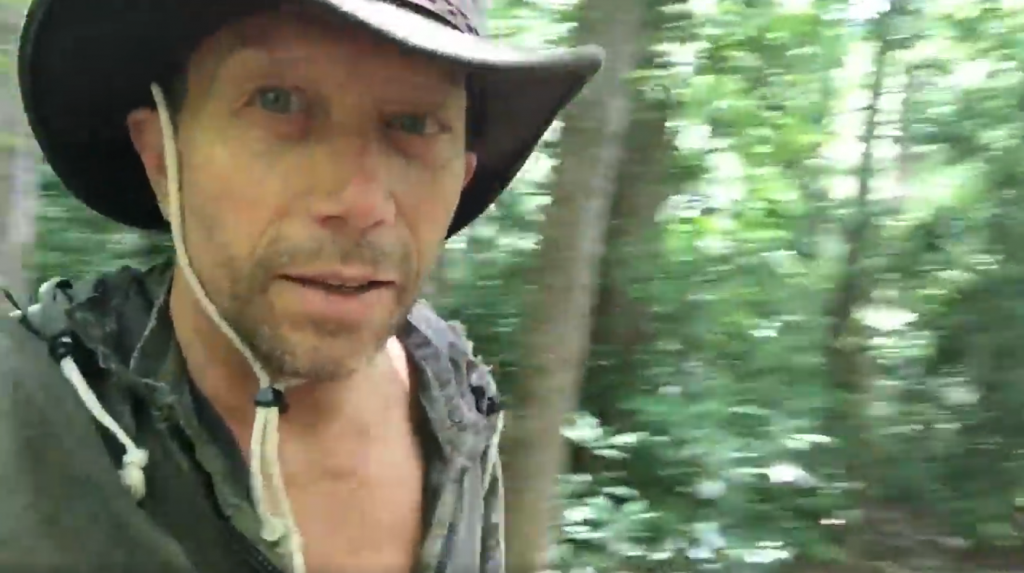I have created a set of outdoor clothing utilizing wool and waxed cotton primarily. This gear packs into a 20 lb. base weight backpack for all year hiking and camping. I show how my natural fiber outdoor wardrobe fits into my backpack and how each article coordinates together to create an effective camping experience in all weather/seasons.
Non-toxic outdoor clothing is also comfortable, breathable, temperature regulating, and allows a deeper experience of nature. This helps balance the bodies temperature regulating processes instead of block them the way sythetic fibers do.
This video accompanies my blog post series Rewilding Your Outdoor Clothing
I present an argument here against synthetic fibers as I am exploring how natural fibers outperform man made textiles by allowing a more balanced dynamic between the weather and the body’s natural processes of moisture and temperature regulation.
The seven criteria for outdoor clothing:
- Weight
- Movability
- Breathability
- Moisture Wicking
- Temperature Regulation
- Ecological Impact
- Non-toxic
We each need to develop a relationship with our entire gear set and know how to alternate different articles of clothing with varying conditions.
Overall this approach will keep you as dry as the standard synthetic wardrobe used by modern backpackers. However in most conditions this approach provides a more comfortable experience keeping the hiker dryer more in homeostasis without synthetic heat stress.
What I would bring on a multi-day backpacking expedition
- Wool Felt Hat
- Umbrella
- Beeswax Coated Cotton Windbreaker. I created this using an oversized cotton shirt from the thrift store. I added hood, drawstring waist, hand warmer pockets and zipper.
- Wool Pants or waxed lightweight cotton
- Merino shorts
- Base Layer of Moisture Wicking and Breathable Merino Top and Bottom
(two sets, one for hiking, one for sleeping) - Shoes: (one pair of minimalist leather boots conditioned with beeswax
- Wool Socks (three pairs: one for hiking, one for sleeping one for washing)
- Merino Head Wrap (one in summer, two in winter)
- Merino Scarf (Multi-purpose article)
- Wool Sweaters two or three which nest over each other
- For temps going down to 20 Degrees Fahrenheit. For winter trips I would also bring extra sweater, a wool hat, wool mittens, and crampons.
Tips
- Wool Felt Hat and umbrella allows air circulation so you don’t overheat and sweat During sun glare conditions the hat is better than sunglasses because the natural light hitting the iris helps maintain balanced Circadian Rhythms.
- Let the waist-down get wet. In summer, shorts and sandals. In colder weather, wool pants and wool socks can get wet and still keep you warm, without overheating. If you try to make your boots waterproof (with waterproof liner, etc), that keeps the water in. So your feet don’t dry out.
- Keep a set of clothes tucked away in waterproof bag only for wearing at camp. A merino top and bottom, wool socks, hat, sweater,
- The tent/tarp is a part of the equation as well. A zip up closable tent can trap moisture/humidity and stifle the temperature regulation process just like a synthetic parka. The Ray Jardine tarp idea solves the problem and makes a more fun, interactive camping experience. And the wool sleeping bag idea from Lucky Sheep completes the equation. Now you have a system that regulates body temperature and wicks moisture to the outside, then allows that moisture to escape, so you are actually drying things out even during rainy conditions.
- My pitching tent (tarp) in rain system is: 1) take off back and cover it with umbrella, 2) Pitch the tent wearing only the beeswax/cotton windbreaker, 3) tent is pitched in five minutes, get in and take the wet windbreaker and merino base layer off, 4) pull the other gear inside, 5) Dry gear gets pulled out of the pack.
- Boil a pot of water and pour it in your water bottle at night. Put this in a wool sock and bring to bed to keep you toasty, especially good at the feet.
- Eat a diet focused on adequate protein and coconut oil/butter as opposed to heavy carbohydrates (grain based). This is super warming helping the body generate its own heat. Drink warm beverages, especially with melted butter and gelatin powder.
Principles
- Fat and the paleo diet as part of “The Body is the first piece of GEAR philosophy.”
- Wool which heats the body as it dries out.
- A NON SYNTHETIC and thus BREATHABLE windbreaker for non-rainy conditions.
- A tent or tarp which is not sealed at the bottom and thus breathable (ventilation)
- A Wool Felt Hat plus Poncho combination and/ or Umbrella which allows ventilation
- Minimalist Shoes which allow proper alignment of the body while walking and build the feet muscles instead of atrophy them

